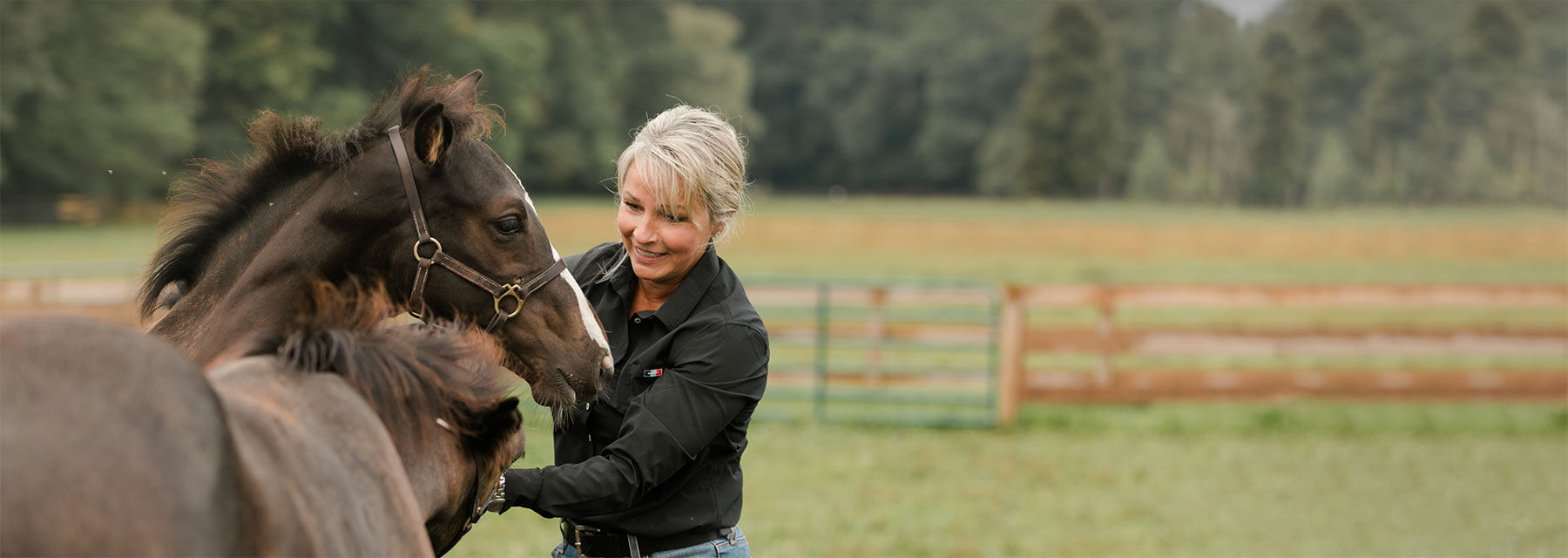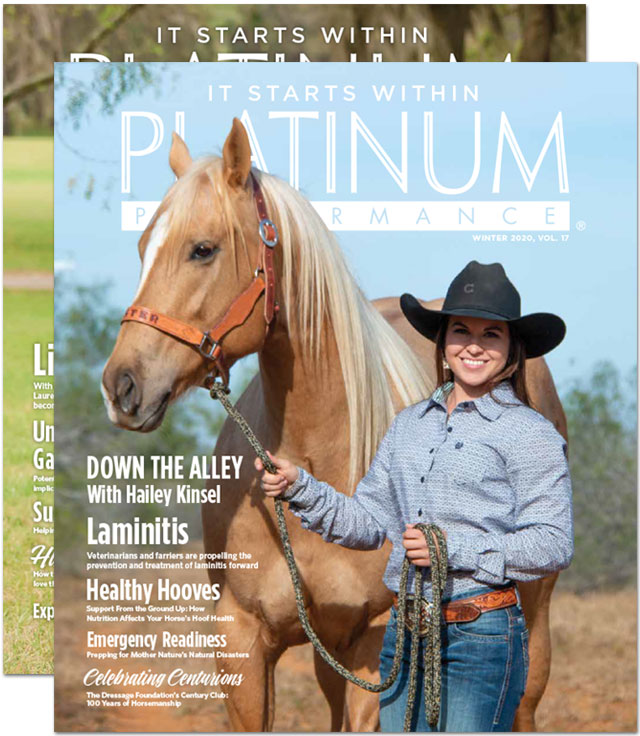Innovative Veterinarians at the Forefront of Their Industry
Dr. Cliff Honnas is Considered a Master of Kissing Spines. Dr. Lisa Fortier: A Revered Surgeon and Regenerative Medicine Guru. Dr. Shane Miller is an Admired Surgeon and Sports Medicine Practitioner.
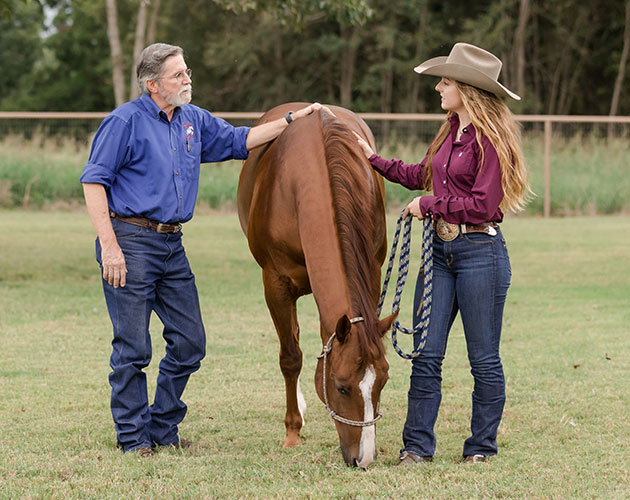
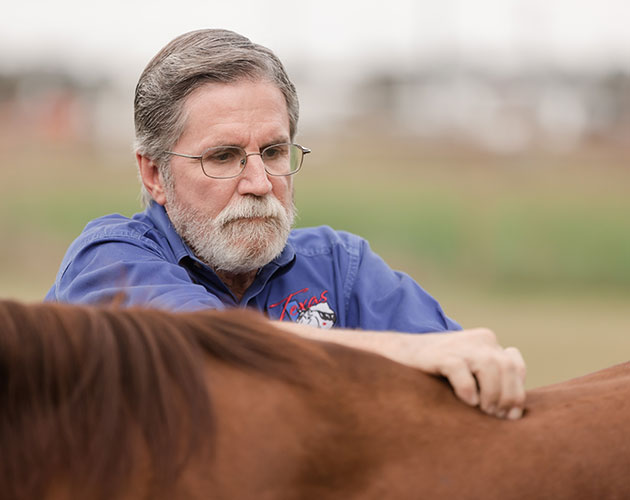
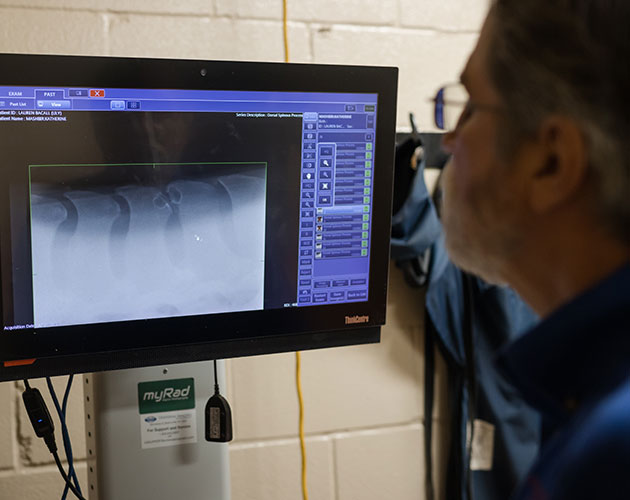
The Kissing Spines Master
Dr. Cliff Honnas Details The Condition and Treatment Techniques, Including The Surgery for Which He's Become Widely Known For
To anyone who has had the immense pleasure of meeting Dr. Cliff Honnas, you’re familiar with the instant feeling of confidence, warmth and dedication he exudes. His heart and soul are in his craft and, to him, veterinary medicine is as much about the connection and ability to serve the owner as it is about the health and well-being of the horse. These aren’t just clients to the good doctor, these are his friends and he’ll go to the ends of the earth for them and their horses.
A self-described small-town ranch kid from Arizona, Dr. Honnas’ story is atypical to say the least. An early mentor helped lead him into a career in veterinary medicine, where he contributed greatly as both a clinical practitioner and educator at Texas A&M University. It wasn’t until he was 50 years old that he took a dramatic turn and opened Texas Equine Hospital in Bryan, Texas. We’ll call it an adventurous move; he calls it calculated but crazy. From that point to today Dr. Cliff Honnas has earned the respect of fellow veterinarians and horse owners not only across the country but around the world. He is considered the foremost authority figure in performing the bone reduction procedure that is often able to alleviate suffering for horses with kissing spines, also known as impingement of the dorsal spinous processes.
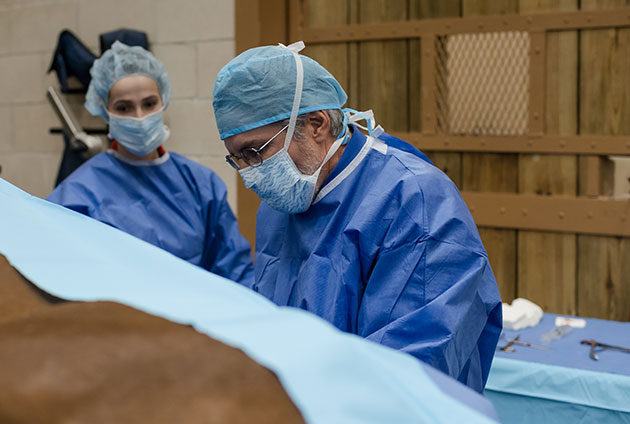
“You can fix one thing with surgery, but if the rest of the horse is broken, you haven't fixed anything. No matter what you do in veterinary medicine, if you don't have a good healthy horse, you're not going to have a good horse.”
— Cliff Honnas, DVM, DACVS, Texas Equine Hospital, Bryan, Texas
PHOTOS BY ELIZABETH HAY PHOTOGRAPHY
Kissing spines is a condition that, thanks to improved knowledge and diagnostics, has become relatively prolific. As research evolves on the topic, we’re learning of potential genetic factors that can predispose a horse to kissing spines, as well as indications that the earlier a horse is broken and ridden, the higher the likelihood that kissing spines may come into play. Conformation and excess weight can be additional contributing factors. “Keep the weight off of them,” insists Dr. Honnas. “Nutrition is key, and that’s why I like Platinum Performance®. They have the nutritionally sound research that builds good body function. You can fix one thing with surgery, but if the rest of the horse is broken, you haven’t fixed anything. No matter what you do in veterinary medicine, if you don’t have a good, healthy horse, you’re not going to have a good horse.” Where human backs are vertical, with vertebrae sitting one over the other, a horse’s back is horizontal, with their spinous processes resembling fence posts that jut out vertically toward the topline from the spine. When those fence posts, per se, get too close together, they impinge the nerve-rich ligament in between and can even get so close that they begin to override one another. Three primary treatment categories are known and deployed for the condition. First, there’s medical management that involves conditioning, rehabilitation and often injections. The second course of action can be the more noninvasive surgical procedure of an interspinous ligament desmotomy, where the surgeon will attempt to cut the nerve rich ligament in between the affected spinous processes. Challenges of this procedure include the fact that when the dorsal spinous processes rub together, the ligament can degenerate to the point where there’s no ligament left to cut. Second, in order to cut the ligament, the surgeon has to be able to fit an instrument between the spinous processes. This is often impossible if the space is too close or there’s overriding. The third option for treatment is where Dr. Honnas has developed a reputation as a magician in the operating room. Horses are trailered to him from across the country for him to perform the bone reduction procedure for which he’s become known. He’s careful to diligently examine the specifics for each case and select the correct candidates for the procedure before agreeing to operate on a horse. The procedure itself, while it may seem extreme, has a tremendously high success rate when performed by a skilled surgeon. “I cut away the edge of the bone, which removes the nerve rich ligament at the same time that we’re recreating that space,” explains Dr. Honnas of the procedure. “There’s no biomechanical interference, and the horse can then often function normally.”
Kissing spines is a condition that has grown in both understanding and diagnosis in recent years. Dr. Honnas has been a tremendous force in educating both riders and veterinarians on the clinical signs, diagnostic techniques and treatment options for a condition that went widely undiagnosed or misdiagnosed in the not so distant past. He loves his work, and as horsemen, both ourselves and our mounts are better off for his extreme passion, tenacity and expertise.
Texas Equine Hospital is still a family operation, and you’ll find that Mrs. Lorie Honnas runs a tight ship with her signature attention to detail and compassionate spirit. The team, above all else, cares deeply for their clients, and it’s evident in every way. “This practice started with just a few employees, my wife, my daughter, our secretary and a couple of technicians. Now we have close to 50 employees and seven veterinarians. We see about 15,000 horses a year. Bottom line, we’ve just been very, very fortunate,” says Dr. Honnas with gratitude.
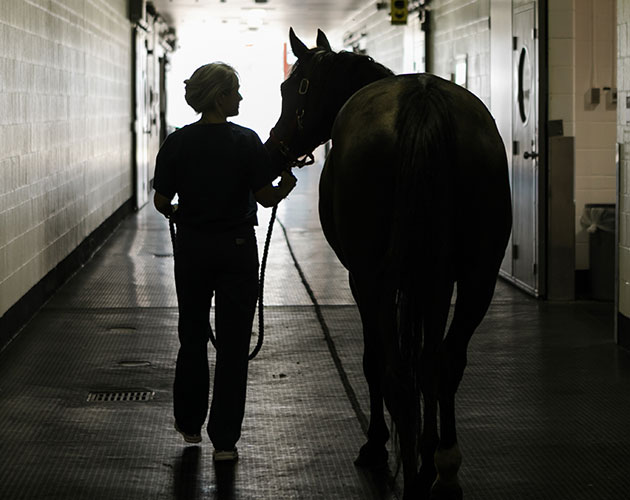
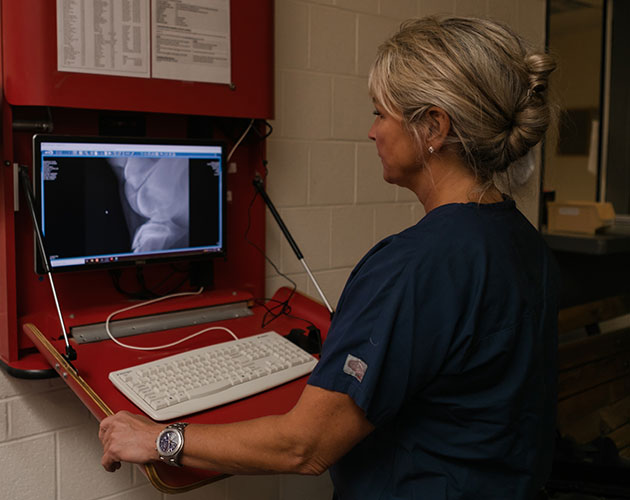
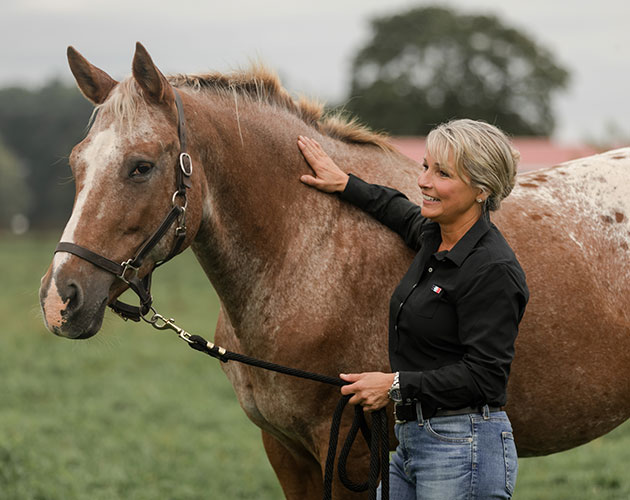
Revered Surgeon and Regenerative Guru
Dr. Lisa Fortier Discusses Advancements in Veterinary Medicine
Dr. Lisa Fortier is a package deal — exceedingly capable, steadfast, emotionally invested in her patients and devoted to training the next generation of greats in the veterinary world. “I love teaching the vet students. I love being taught by the clients, owners and animals. Each of them brings something very unique. It doesn’t matter if I’ve seen a lame horse or a foot abscess 100 times, each one of them brings something new and a new opportunity to help,” she says in earnest of her passion for the profession. She’s unexpected, no doubt — trading the wideopen spaces of her childhood in the Dakotas for the crisp and wooded Northeast. Her petite blonde frame has a commanding presence, no doubt due to her brilliance; she’s undeniably at the absolute pinnacle of her trade. A celebrated surgeon, lameness guru and regenerative medicine aficionado, Dr. Fortier is also the newly appointed Editor-In-Chief of the internationally respected Journal of the American Veterinary Medical Association (JAVMA) and the American Journal of Veterinary Research (AJVR). This honor would be a centerpiece in the career of any veterinarian, but especially for a woman in a shifting landscape of veterinarians from predominantly male to overwhelmingly female. She has, in no uncertain terms, been a trailblazer.
Although Dr. Fortier brings tremendous expertise and long experience in the operating room and as a thorough diagnostician in lameness cases, she is perhaps equally as well-known for having her finger on the pulse of the future of veterinary medicine. From adult equine mesenchymal stem/stromal cells to numerous other regenerative therapies, Dr. Fortier can often be found shoulder-to-shoulder with her team in her eponymous lab space, pulling plates of stem cells out of the cryo freezer and digging into her research. She’s a voracious learner with a sense of curiosity and a driven spirit that knows no bounds. Looking around her surroundings, it’s not hard to tell why she so loves Ithaca, New York, and the hallowed halls of the university she considers home. “Cornell is a fabulous place for innovation, not just in horses but in a lot of different ways. It’s well known across the campus; it’s just the spirit of collaboration that thrives here,” she says of the institution that’s marked by its history-rich gothic building and stunning natural waterfalls.
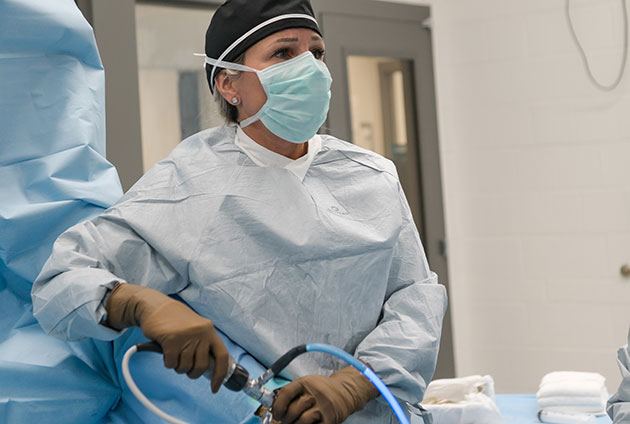
A celebrated surgeon, lameness guru and regenerative medicine aficionado, Dr. Fortier is also the newly appointed Editor-In-Chief of the internationally-respected Journal of the American Veterinary Medical Association (JAVMA) and the American Journal of Veterinary Research (AJVR).
PHOTOS BY ELIZABETH HAY PHOTOGRAPHY
Dr. Fortier is, without a doubt, in constant pursuit of what’s next on the horizon in terms of preventive strategies, surgical advancements and treatments to better her patients’ outcomes. “In surgery, specifically, one of the key focuses has been in minimally invasive and standing surgery. We can do a lot of standing arthroscopy, which mitigates the potential detriment to the horse. It’s exhausting for them to be put under general anesthesia, and that can take them longer to recover. We do standing stifle arthroscopy, standing fetlock arthroscopy, and we have a nanoscope that is as small as a needle; it doesn’t even require a suture after you’re done. You can simply use this very, very small instrument, and do a lot on an outpatient basis,” she explains of just one tool that’s changed the shape of more minor surgical procedures.
Another significant area of progress, aside from vital improvements to surgical technique, is the post-surgical rehabilitation that can often make the difference in a successful outcome and return to work versus a continued effect from injury. “The rehab, the postoperative part of the equation, is what’s really come along. The regenerative medicine is a big passion of mine for preserving the joint, and really, we’ve changed the world with how little arthritis develops postoperatively. Also, joint supplementation is important from an early age, and paying attention to not overfeeding our equine patients. Nutrition is really important, and it’s what has extended the life of our horses. It used to be a 20-year-old horse was really old. Now you see 20-year-olds being ridden all the time and 35 is an old horse. I think that’s mostly due to nutrition. One of my favorites is Platinum CJ; every one of my orthopedic cases goes home with it recommended as part of the continuum of care. I really believe that it’s the whole combination; the whole holistic approach to the horse. It’s not just going in there and taking a chip out, but rather, we now prehab the horse, operate and then rehab the horse.”
“I obviously have a deep passion for my job. I love the animals. That's a given for every veterinarian, but it's also solving the biological problem. It's an amazing feeling and a wonderful profession.”
— Lisa Fortier, DVM, PhD, DACVS, Cornell University College of Veterinary Medicine
Dr. Fortier practices a whole-horse approach to medicine that has seen tremendous results for her patients. She’s a skilled surgeon, yes, but she’s also an accomplished horsewomen in her own right. One look at her and your first guess wouldn’t necessarily be that her roots are in the team-roping arena, but it’s in fact the case. Today, however, when she’s not in scrubs with a scalpel in hand or editing a manuscript, you’ll find her in tall boots at a weekend competition aboard a warmblood she rehabbed herself. “I obviously have a deep passion for my job,” she says of her evident commitment. “I love the animals. That’s a given for every veterinarian, but it’s also solving the biological problem. It’s an amazing feeling and a wonderful profession.”
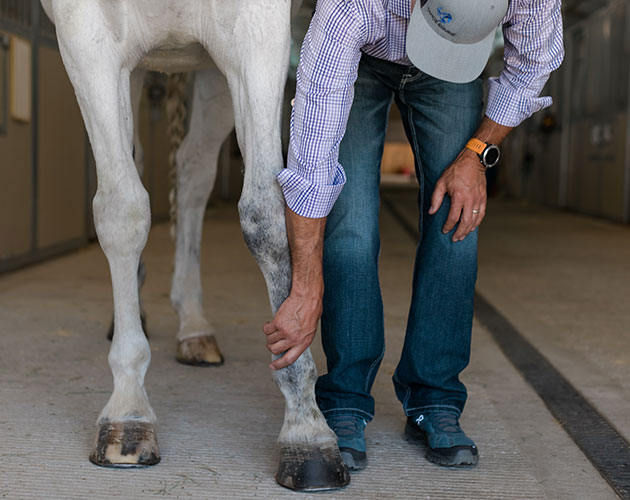
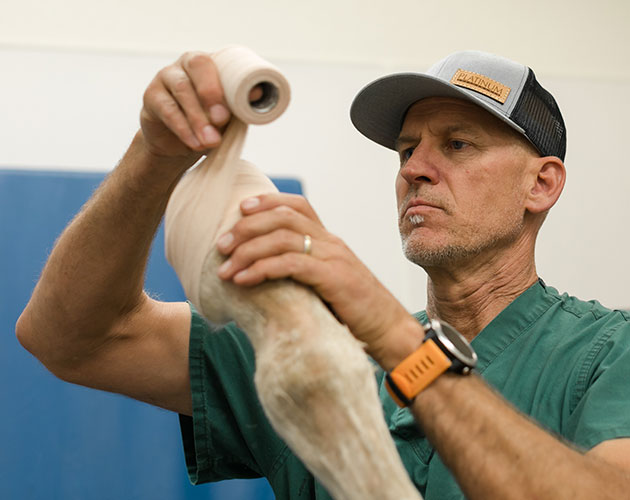
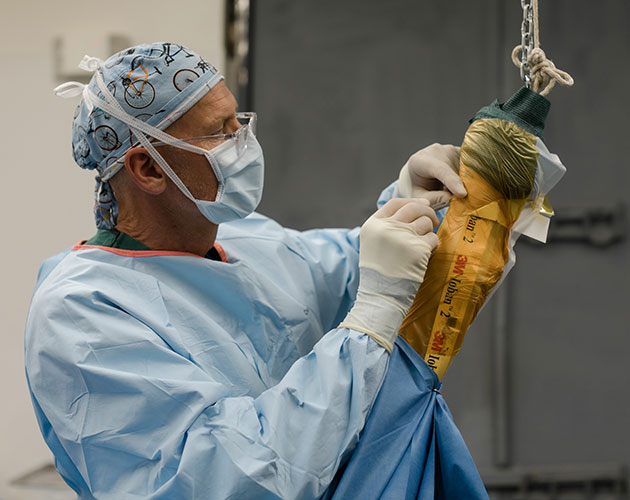
Surgeon and Sports Medicine Practitioner
Dr. Shane Miller Talks the Intersection of Equine and Human Medicine as it Pertains to Treating and Rehabbing the Athlete
A born and bred Nevada guy, Dr. Shane Miller has an extensive pedigree in veterinary medicine that has seen him accomplish a surgical residency at the University of California at Davis’ widely revered College of Veterinary Medicine, then go on to practice and lead at Littleton Equine Medical Center in Littleton, Colorado — a top-tier referral hospital in the West. The profession has taken him numerous places, but it’s his skill, dedication and innate sense of the horse that has earned him a sterling reputation amongst both his clients and peers. No matter where in the world his work has led him, it was the journey home to becoming an owner of Comstock and Great Basin Equine Hospitals that grabbed his heart. “Being from Nevada, I think you have to be born and raised here to really understand it. I’ve had some amazing opportunities, but the opportunity to come back here to the Carson Valley is special. My roots are here.”
As a high-level athlete himself, Dr. Miller has a unique perspective that unquestionably makes him a better veterinarian and surgeon. The man’s vet truck has bike racks on top of his vet box and his cycling kit rides permanently on his back seat, ready to be slipped on at a moment’s notice when he gets the rare spare time to jump on his road bike for a quick ride. “Human athletes are getting better and better because of all of the advances in science, nutrition, conditioning and recovery. We’re now more fully understanding what it takes for us as humans to compete at the highest levels. We ask the same thing of our horses. At a cellular level, we’re really not much different. We need similar things to do our jobs. It takes the right conditioning, the right training and the right nutrition. That’s why the human and the horse represent each other so well,” he says, admiringly of the animal to which he draws so many parallels to himself and other human athletes like him.
The idea of translational medicine is essentially examining human and equine research and gleaning valuable insights from each that can be applied to the other species. This concept is applied and utilized widely in many centers of influence from a research perspective but also in clinical application. Much has been learned to benefit the horse from research done on the human side, and the opposite is just as true; the horse has been an excellent biological model for the human in areas such as lameness, the gut microbiome, reproduction and fertility and regenerative medicine, just to name a few. “In the last two or three decades, we’ve advanced so much as equine veterinarians in the science, the research and the treatment protocols. We’re really driving forward,” says Dr. Miller, appreciating the progress made on behalf of the horse. “The medicine has changed, but the post op care has changed so much. That’s skyrocketed our prognoses.” Dr. Miller is a devoted advocate of a strong approach to practicing sports medicine, but in particular, of the rehabilitation portion of the equation. He founded Tahoe Equine Rehabilitation and Conditioning on the grounds of Great Basin Equine Hospital, where an underwater treadmill and cold water spa can be seen just steps from the treatment rooms and operating room. It’s a comprehensive approach to medicine, surgery and recovery that he believes makes for better outcomes and a higher probability that the patient will return to work successfully.
“Any time we can minimize injury, and even prevent it, then it’s a win.”
— Shane Miller, DVM, DACVS, Comstock and Great Basin Equine Hospitals
As an athlete himself, Dr. Miller is a constant advocate of a preventive approach to veterinary medicine. “We always aim to condition and train these horses in the best way possible, with the goal of having less injuries,” he says. “Any time we can minimize injury, and even prevent it, then it’s a win.” He takes a special interest in extending the longevity of equine athletes through a more personalized, preventive approach to their care. You could say that he intimately understands the need to preserve health and performance for athletes as they age. “It’s tough, and the older we get, the harder it is,” he says plainly. “It’s the same way for the horse.”
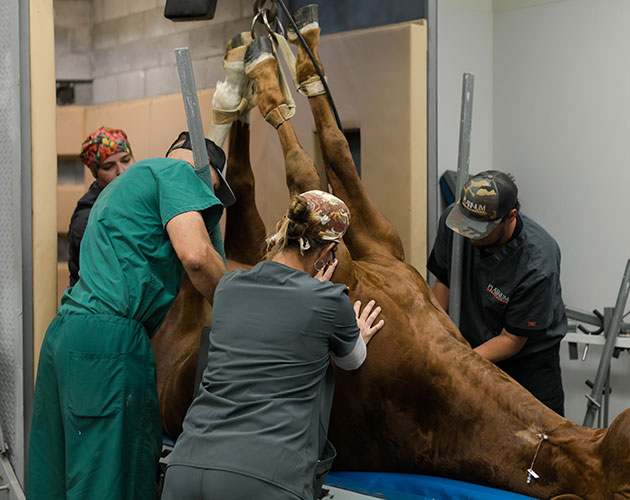
Dr. Shane Miller has an extensive pedigree in veterinary medicine that has seen him accomplish a surgical residency at the University of California at Davis’ widely revered College of Veterinary Medicine, then go on to practice and lead at Littleton Equine Medical Center in Littleton, Colorado — a top-tier referral hospital in the West.
PHOTOS BY ELIZABETH HAY PHOTOGRAPHY
Dr. Shane Miller is a thinker, a constantly churning scientific mind and an athlete who looks closely at the details of his own performance and training to learn all he can for the benefit of the horse. “I’m faced with something new every day and with every case,” he says of what keeps him passionate. More often than not, as his feet pound a mountain trail around the endlessly beautiful Lake Tahoe on any given morning, he’s thinking about a case, playing out an idea in his head, examining what he would change or try differently next time or what he learned as a successful treatment. “We get a chance to do the small things well,” he says of being an equine veterinarian. “When we do that and understand that each horse is an individual, the hope is that we’re not dealing with the big things as much.”
Never one to sit still, Dr. Miller will undoubtedly be out front for the foreseeable future, looking for a better way to treat his patients, operate injuries, rehab equine athletes and, hopefully, prevent the challenges that brought them to his doorstep. “You’ve got to have the drive to be better everyday, you’ve got to have the fire in your belly and you’ve got to have a competitive mindset,” he says of what it takes to remain a passionate and dedicated practitioner. “Veterinary medicine, and especially equine medicine, has given me way more than I’ve given it. I just try to do my best every single day, and hopefully that translates to helping the horse.”

by Jessie Bengoa,
Platinum Performance®
